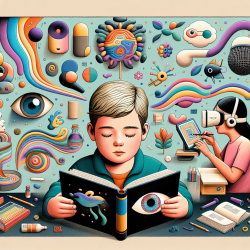As practitioners dedicated to enhancing the lives of children, it's essential to continuously improve our skills and knowledge. A recent study titled "Assessment of Sensory Processing Issues in Children with Neurodevelopmental Disorders and Experiences of Maltreatment" offers valuable insights that can help us better support children with developmental disabilities and histories of maltreatment.
Understanding Sensory Processing in Different Groups
The study assessed the sensory characteristics of three groups of children: those with developmental disabilities (DD), those with developmental disabilities and experiences of maltreatment (DM), and typically developing children (TD). Using virtual reality (VR) and self-administered questionnaires, the researchers found significant differences in sensory processing among these groups.
Key Findings
- The DM group had shorter gaze durations at the "teacher" compared to the DD group, indicating potential difficulties in sustaining attention.
- The DM group showed longer gaze durations at "others," suggesting a shift in interest and potential hypersensitivity to surrounding stimuli.
- The DD group exhibited higher scores in tactile sensitivity, taste/smell sensitivity, and auditory filtering compared to the TD group, aligning with previous research on sensory processing in children with autism and ADHD.
- Both the DM and DD groups had lower scores in interoception (awareness of internal body states) compared to the TD group, highlighting potential challenges in body awareness and emotional regulation.
Implications for Practice
These findings underscore the importance of tailored interventions for children with developmental disabilities and histories of maltreatment. Here are some practical steps practitioners can take:
- Use VR for Assessment: Implement VR environments to assess sensory processing and attention patterns. This can provide a more immersive and accurate understanding of a child's sensory experiences.
- Focus on Interoception: Incorporate activities that enhance body awareness and emotional regulation, such as mindfulness exercises and sensory integration therapies.
- Individualized Sensory Plans: Develop personalized sensory plans that address the specific sensory sensitivities and needs of each child, ensuring a supportive and accommodating environment.
- Collaborate with Caregivers: Engage parents and caregivers in the assessment and intervention process, providing them with tools and strategies to support their child's sensory needs at home.
Encouraging Further Research
While this study provides valuable insights, further research is needed to explore the long-term effects of tailored sensory interventions and the potential benefits of VR-based assessments. Practitioners are encouraged to stay informed about the latest research and consider participating in studies that contribute to our understanding of sensory processing in children with developmental disabilities and histories of maltreatment.
To read the original research paper, please follow this link: Assessment of Sensory Processing Issues in Children with Neurodevelopmental Disorders and Experiences of Maltreatment.










